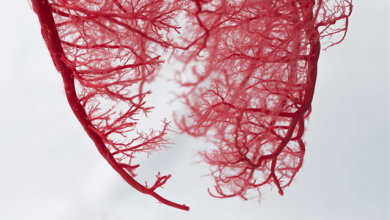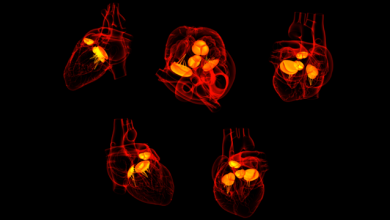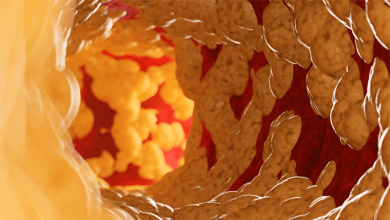Search results
Author(s):
Kathryn Dawson
,
Tara L Jones
,
Kathleen E Kearney
,
et al
Added:
3 years ago
Advances in transcatheter structural heart interventions and temporary mechanical circulatory support (MCS) have led to increased demand for alternative sites for large-bore vascular access.1 Percutaneous axillary artery (AA) access is an appealing alternative to standard femoral access when the patient has iliofemoral peripheral arterial disease (PAD), obesity or there is an expected device…
View more
Author(s):
Robert J Henning
Added:
3 years ago
Myocardial infarction (MI) is the leading cause of death among people in the industrialised world and will, according to the World Health Organization (WHO), become the leading cause of death in the world in 2020.1 For the treatment of patients with MIs and ischaemic cardiomyopathies, remarkable medical advances have been made during the second half of the 20th Century that have increased patient…
View more
Author(s):
Kendra J Grubb
,
Tamim Nazif
,
Mathew R Williams
,
et al
Added:
3 years ago
Concomitant coronary artery disease (CAD) and valvular heart disease is a common problem in the ageing population. It is estimated that the prevalence of mitral regurgitation and aortic stenosis in individuals over the age of 70 is 10 % and 4 %, respectively.1,2 Among patients presenting with symptomatic aortic stenosis, concurrent CAD occurs in over 50 % of those over 70 years of age and over 65…
View more
Robot-assisted PCI
Author(s):
Kalpa De Silva
,
Aung Myat
,
Julian Strange
,
et al
Added:
3 years ago
Article
Author(s):
Jason N Katz
,
Sunil V Rao
Added:
3 years ago
There has been a significant evolution in the management of patients with acute coronary syndromes (ACS), largely driven by advances in pharmacological therapy. Increased implementation of evidence-based antithrombotics and antiplatelet agents has led to improved patient outcomes.1,2 Additionally, management algorithms favouring early invasive intervention in high-risk patients are gaining…
View more
Author(s):
Daniel Tze Yee Ang
,
Colin Berry
Added:
2 years ago
Author(s):
Magdalena Erlebach
,
Ruediger Lange
Added:
3 years ago
Patients with multivalvular disease (MVD) can present with a variety of valve pathologies and combinations, often requiring a complex treatment strategy. Both the Euro Heart Survey and the EURObservational Research Programme Valvular Heart Disease Registry (presented at the European Society of Cardiology [ESC] 2018 meeting) demonstrated that more than one-fifth of patients with native valve…
View more
Author(s):
Felipe H Valle
,
Basma Mohammed
,
Stephen P Wright
,
et al
Added:
3 years ago
Author(s):
Christoph Gräni
,
Philipp A Kaufmann
,
Stephan Windecker
,
et al
Added:
3 years ago
Anomalous origin of the coronary artery from the opposite sinus of Valsalva (ACAOS) is a rare inborn disease that is characterised by an anomalous course and/or termination of a native coronary vessel.1,2 The traditional definition of ACAOS differentiates between benign and malignant variants. Malignant ACAOS has an interarterial course (IAC) of the anomalous vessel between the pulmonary artery…
View more
Author(s):
Adriano Caixeta
,
Eugenia Nikolsky
,
Roxana Mehran
Added:
3 years ago
Contrast-induced nephropathy (CIN) is one of the most common causes of hospital-acquired acute renal failure.1,2 The development of CIN after diagnostic coronary angiography and/or percutaneous coronary intervention (PCI) is associated with prolonged hospitalisation and a remarkable increase in morbidity, early and late mortality and costs.3–6 CIN is an absolute (≥0.5mg/dl) or relative (≥25%)…
View more















 « First
« First